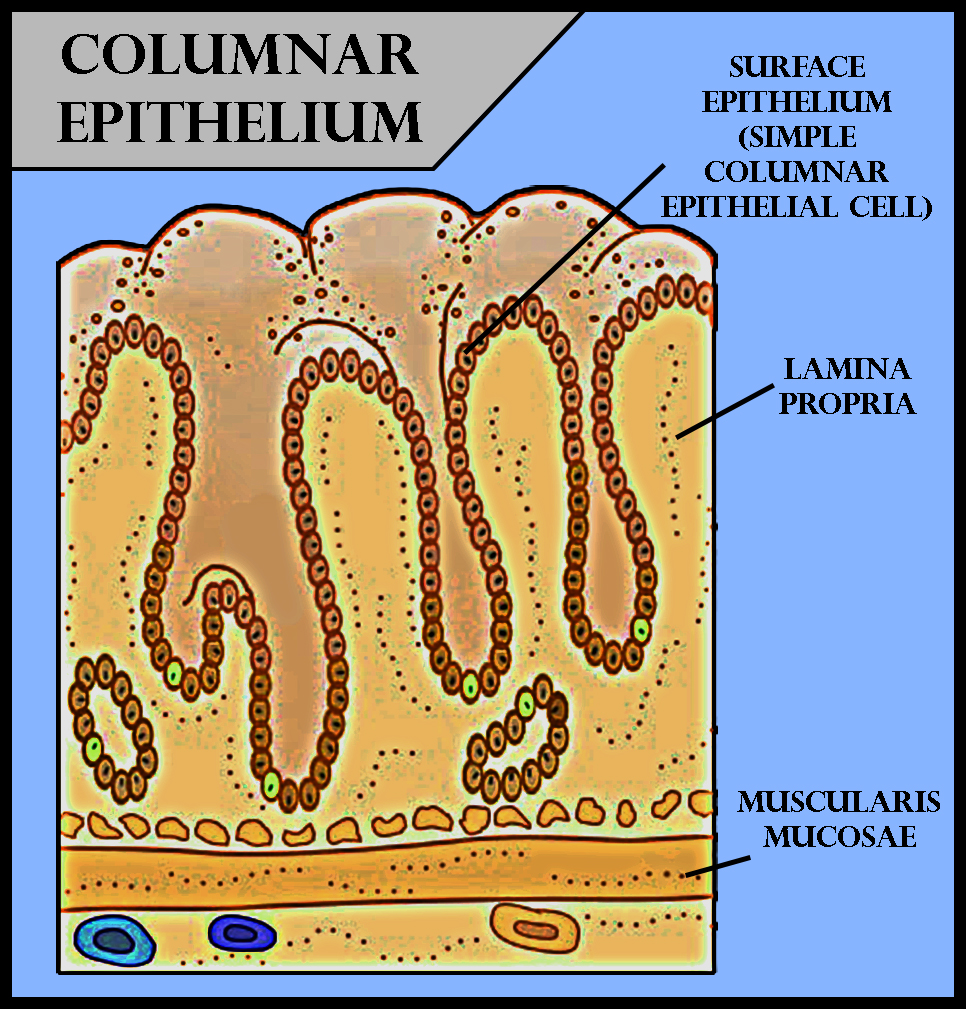
Innermost layer of the mucosa is made up of columnar epithelium except :
(a)Oesophagus
(b)Duodenum
(c)Intestine
(d)Stomach
Answer
480.6k+ views
Hint: Mucosa is the innermost layer of the GI tract. In certain parts of the GI tract, in which their primary function is the transport of food, the epithelium is stratified, squamous and non-keratinizing, for protective purposes.
Complete answer:
Digestive mucosa is made up of three sublayers and the Innermost layer of the mucosa is made up of columnar epithelium except in the mouth, esophagus, and anus where it’s stratified squamous. Hence the Innermost layer of the mucosa is made up of columnar epithelium except for Oesophagus. The mucosa is also known as the mucous membrane is the innermost layer of tissue. It’s a moist epithelial membrane that lines the alimentary canal lumen from mouth to the anus. The mucosa of organs is composed of one or more layers of epithelial cells that secrete mucus, and an underlying lamina propria of loose connective tissue. The type of cells and type of mucus secreted vary from organ to organ and each can differ along a given tract.
Additional Information: -The mucosa is the innermost layer of the GI tract. It is made up of three layers: the epithelium, lamina propria, and muscularis mucosae.
-The mucosa surrounds the lumen or open space within the digestive tube. This layer comes in direct contact with digested food.
-The inner surface of the stomach is lined by a mucous membrane known as the gastric mucosa. The mucosa is always covered by a layer of thick mucus that is secreted by tall columnar epithelial cells.
So, the correct answer is ‘Oesophagus’.
Note: -The mucosa contains specialized cells and glands that produce hydrochloric acid and digestive enzymes to help digest food.
-The mucosa in the cardiac and pyloric regions of the stomach release mucus that helps protect the lining of the stomach from the acid produced for digestion.
-The intestinal mucosa comprises the inner lining of the intestinal tract and maintains close proximity with commensal microbes that reside within the intestinal lumen.
-There are three types of oral mucosa: lining, masticatory, and specialized. Lining mucosa lines surfaces such as the soft palate and the floor of the mouth.

Complete answer:
Digestive mucosa is made up of three sublayers and the Innermost layer of the mucosa is made up of columnar epithelium except in the mouth, esophagus, and anus where it’s stratified squamous. Hence the Innermost layer of the mucosa is made up of columnar epithelium except for Oesophagus. The mucosa is also known as the mucous membrane is the innermost layer of tissue. It’s a moist epithelial membrane that lines the alimentary canal lumen from mouth to the anus. The mucosa of organs is composed of one or more layers of epithelial cells that secrete mucus, and an underlying lamina propria of loose connective tissue. The type of cells and type of mucus secreted vary from organ to organ and each can differ along a given tract.
Additional Information: -The mucosa is the innermost layer of the GI tract. It is made up of three layers: the epithelium, lamina propria, and muscularis mucosae.
-The mucosa surrounds the lumen or open space within the digestive tube. This layer comes in direct contact with digested food.
-The inner surface of the stomach is lined by a mucous membrane known as the gastric mucosa. The mucosa is always covered by a layer of thick mucus that is secreted by tall columnar epithelial cells.
So, the correct answer is ‘Oesophagus’.
Note: -The mucosa contains specialized cells and glands that produce hydrochloric acid and digestive enzymes to help digest food.
-The mucosa in the cardiac and pyloric regions of the stomach release mucus that helps protect the lining of the stomach from the acid produced for digestion.
-The intestinal mucosa comprises the inner lining of the intestinal tract and maintains close proximity with commensal microbes that reside within the intestinal lumen.
-There are three types of oral mucosa: lining, masticatory, and specialized. Lining mucosa lines surfaces such as the soft palate and the floor of the mouth.

Recently Updated Pages
Master Class 11 Economics: Engaging Questions & Answers for Success

Master Class 11 Business Studies: Engaging Questions & Answers for Success

Master Class 11 Accountancy: Engaging Questions & Answers for Success

Master Class 11 English: Engaging Questions & Answers for Success

Master Class 11 Computer Science: Engaging Questions & Answers for Success

Master Class 11 Maths: Engaging Questions & Answers for Success

Trending doubts
State and prove Bernoullis theorem class 11 physics CBSE

What are Quantum numbers Explain the quantum number class 11 chemistry CBSE

Write the differences between monocot plants and dicot class 11 biology CBSE

Why is steel more elastic than rubber class 11 physics CBSE

Explain why a There is no atmosphere on the moon b class 11 physics CBSE

1 ton equals to A 100 kg B 1000 kg C 10 kg D 10000 class 11 physics CBSE




